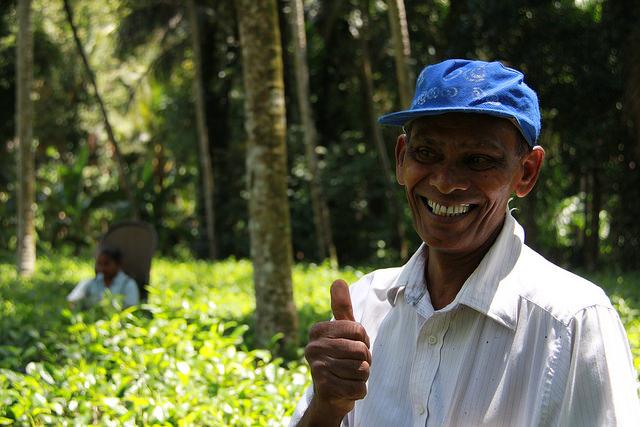Accessing Product Quality in Sri Lanka: A Recap of GIIF’s Peer Exchange
You are here

Having many Sri Lankan friends in my home country of Australia, I have always wanted to visit Sri Lanka. The image of beautiful green tea plantations comes to mind, and perhaps rightfully so. This May, I had the opportunity to visit and understand more about their Index Insurance market through the Index Insurance Forum – a community of practitioners working towards market development and scalability in Index Insurance.
The visit was part of a peer exchange with SANASA, an insurance company in Sri Lanka and a partner of the World Bank Group’s Global Index Insurance Facility (GIIF). The exchange centered on a critical assessment of SANASA’s index insurance product. In particular, we were to use the International Labour Organization’s (ILO) “PACE” framework for client value to determine the strengths and weaknesses of the product, and make recommendations to SANASA management on improving its value.
As practitioners of index insurance, each of us within the group were curious to share our own experiences, but in a way that went beyond spoken words and powerpoint presentations. During the visit, we were to wear the hat of a consultant to work together through the respective product issues of Price, Access, Cost, Experience – making up the PACE assessment tool.
During the second day of the visit, we travelled to a rural village near Galle in the south, surrounded by the Sri Lanka I envisioned – green trees, green leaves, and green paddy fields. Being a tropical country it was quite humid as we exhausted ourselves walking up hills and around bends to arrive at our meeting place with SANASA clients.
This was an area with clients of SANASA’s two parametric index insurance products – tea and paddy. The insurance protects against excess and deficit of rain, determined by readings from local weather stations. Through focus group discussions, we heard feedback on the subscription process, stories of their years of harvests, all the way to a recounting of the first time that somebody in the village received a payout.
With an extensive network of cooperatives through which the product is offered, SANASA representatives selling the product are only a short walk away for most clients. In future this could be improved further, with discussions focusing on moving sales to a mobile platform.
While there are several advantages of the product, clients pointed out that the weather station upon which their contract was based was quite far from their fields. They knew very well that the climate and topography varied a lot within this distance, and after all the walking we did that morning, I could definitely relate.
One key objective of the Index Insurance Forum is to foster experience exchange amongst the participants to help address common issues such as basis risk, and the debate around the performance of weather stations compared to satellites. The clients understood well this concept and the limitations it creates for index insurance. When talking of their experiences, they expressed doubts of whether they would renew their policies if such a “basis risk event” were to adversely affect them. This is why client value is so important. It is the client’s perception of an insurance product that determines whether it will be bought or renewed. In SANASA’s case, implementers are working to address this issue by setting up more automated weather stations, and find ways to incorporate satellite data as a means to enhance product design.
Low-income populations have limited financial resources and are often very savvy about their purchases as a result. The usefulness of the PACE framework is that it looks in detail into the areas of price, access, cost and experience, to help organisations like SANASA improve the value of their product from a client’s perspective.
Leaving Sri Lanka both exhausted and energized, the group took many lessons back to their own respective projects. In many cases these challenges are not unique to SANASA, and appear in different ways in all our own projects. In my work with Mercy Corps, the next time I am walking up a hill to a village to meet clients on a hot and sweaty day in Guatemala, I will continue to ask the same questions. As I feel a few drops of rain, I will ask myself how far it is to the nearest weather station, and whether the satellites high up in the sky are doing a better job of capturing the raindrops I can feel.
A big thank you to everyone from SANASA, the ILO’s Impact Insurance Facility, and the WBG’s Global Index Insurance Facility for making this successful exchange visit possible.
